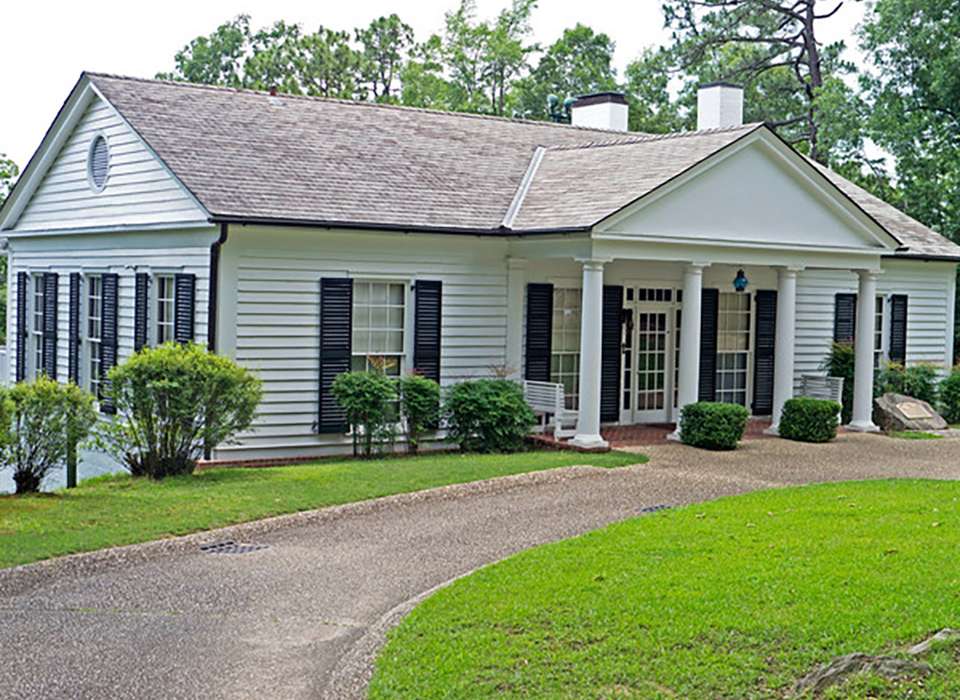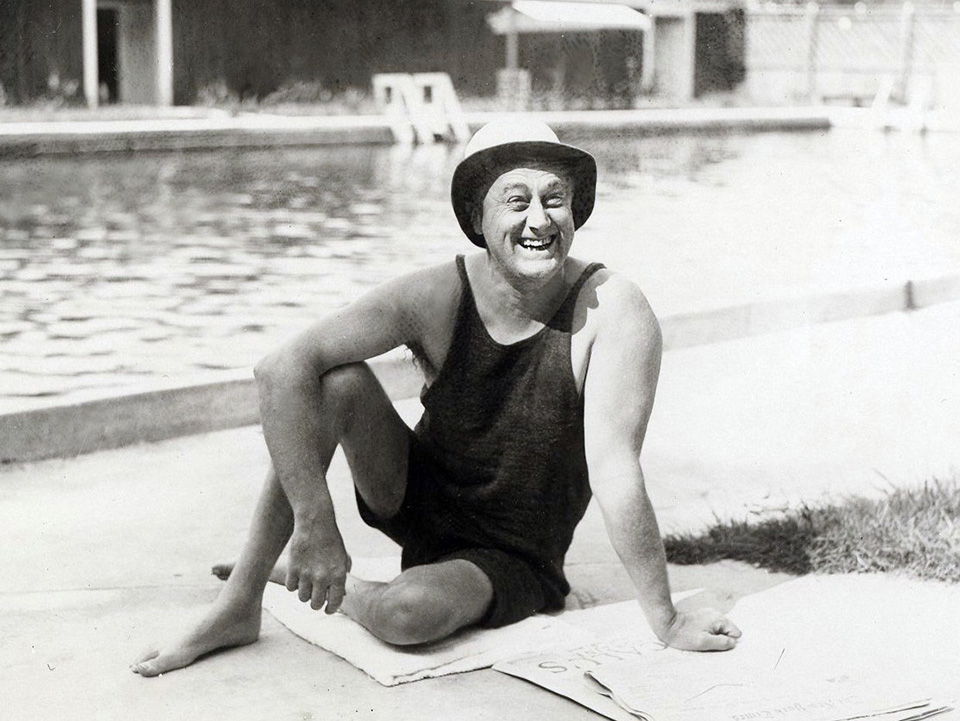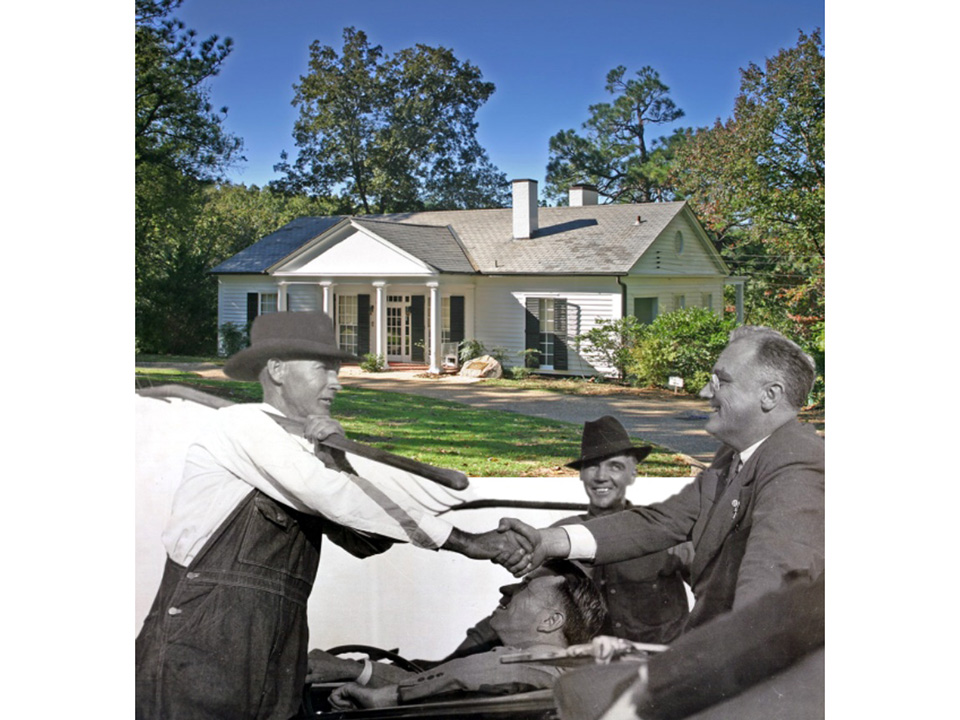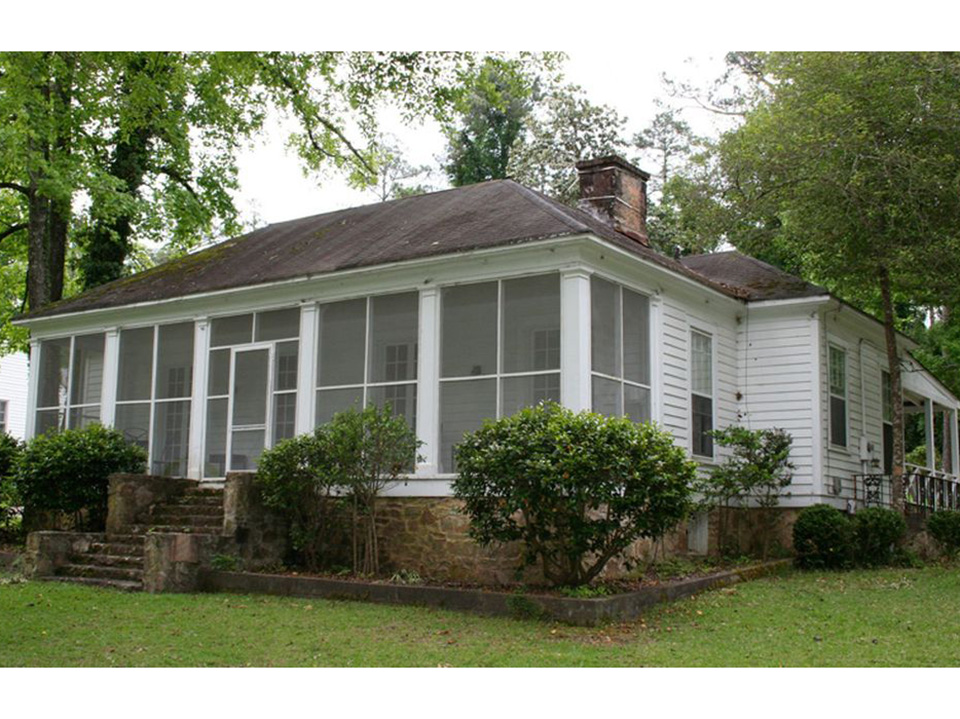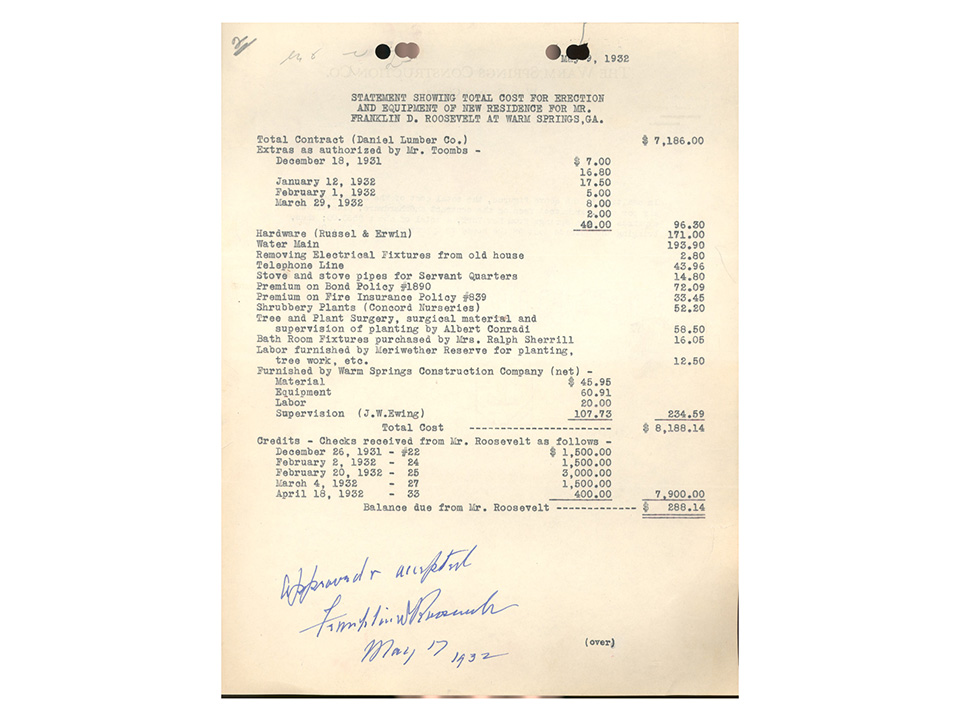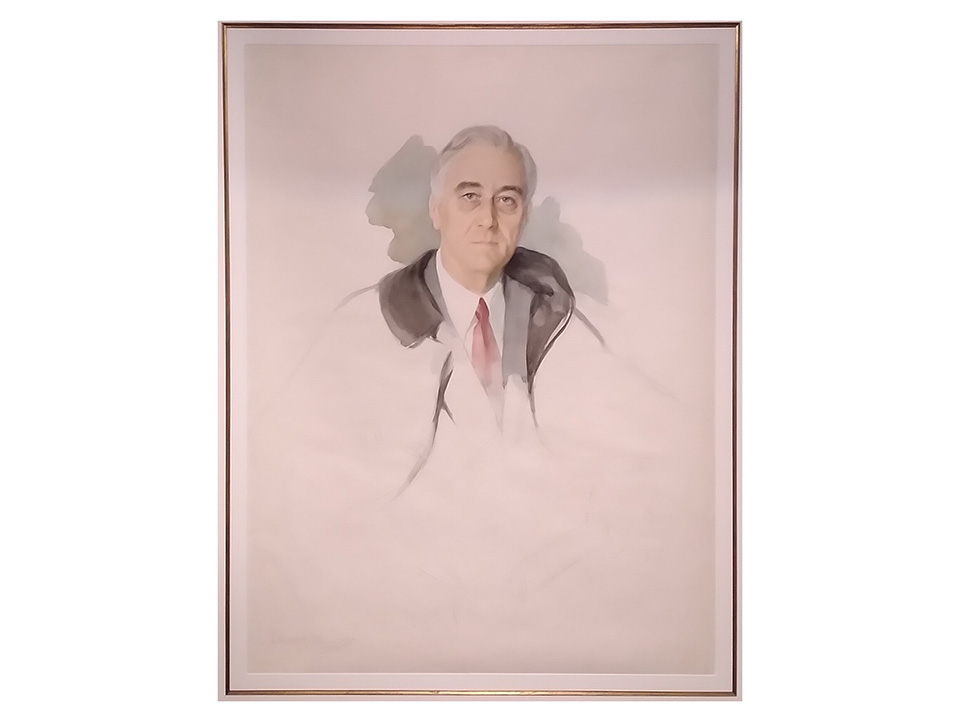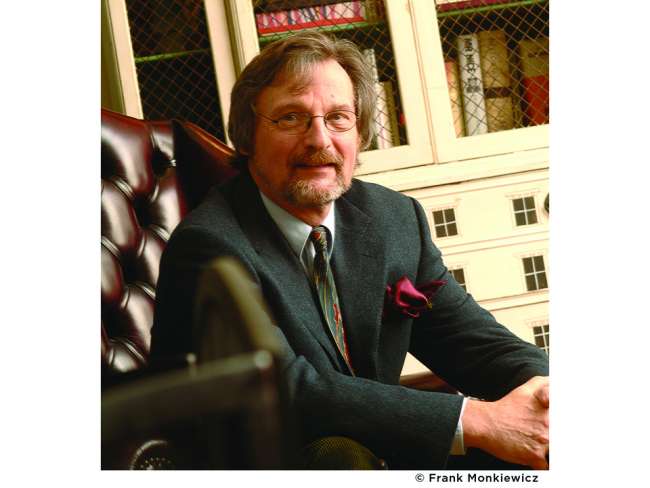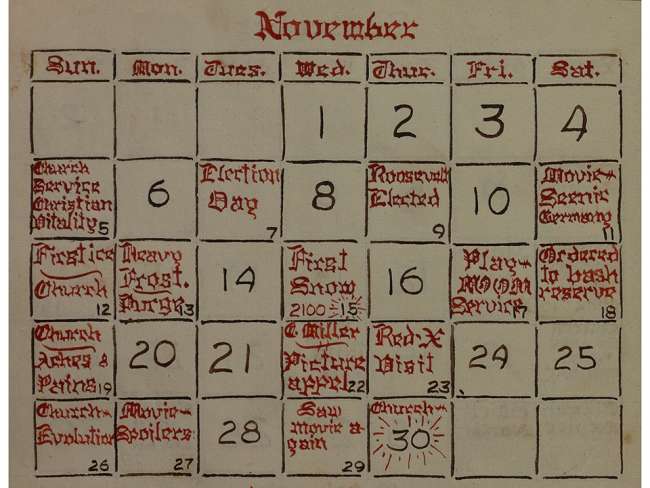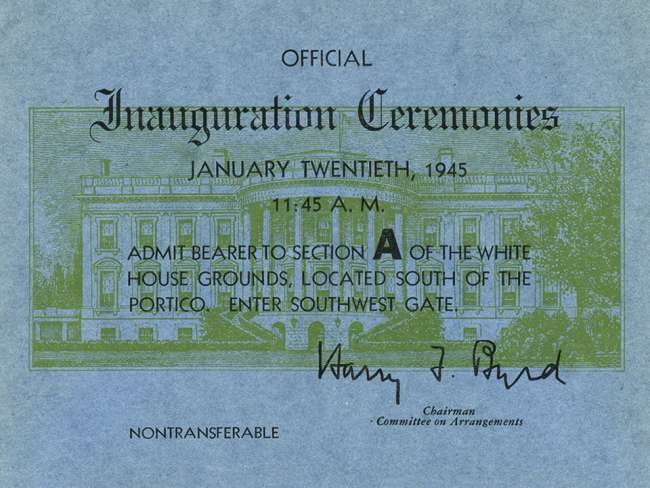Primary image courtesy of Roosevelt's Little White House Historic Site.
On October 3, 1924 Franklin D. Roosevelt visited Warm Springs, Georgia for the first time. It was his last hope of finding a cure for the polio that had left him crippled three years earlier. Eleanor came with him and he was carried from the train to an awaiting automobile. The man who carried him had no idea that, within 10 years, FDR would be the most powerful man in the nation, carrying the weight of a damaged nation on his shoulders. That first night, Roosevelt was kept awake by squirrels running across the roof of his cottage. The next day, Roosevelt took his first swim in the Warm Springs pool. The water was pleasant, he noted, and soon he was able to stand in four feet of water—something he had been unable to do previously.
Roosevelt swam daily for the next two weeks. He also began to explore the countryside and towns meeting the local folks. It was here that Roosevelt got his first glimpse of rural southern poverty and it left a very strong impression on him. There was little fanfare during his first visit, but Cleburne Gregory of the Atlanta Journal came down to find out what the former Assistant Secretary of the Navy and Vice Presidential candidate was doing in this neck of the woods. Roosevelt did not want any press coverage but agreed to an interview. The article is notable for many reasons, but mainly for the first time in three years FDR said that he was able to move his right leg. He also commented on the beauty of the area and the hospitality he received, what he called “the Spirit of Warm Springs.” He would come to rely upon these qualities, this spirit, for the next 21 years. The article and photographs showing Roosevelt’s shriveled legs were published in the October 26, 1924 issue of Sunday Magazine and was syndicated nationally. Unbeknownst to Roosevelt, people with polio across the country read the story with great interest. Shortly after the article was published, polio patients began to arrive hoping to experience the “the Spirit of Warm Springs.” The Warm Springs was such a huge success that FDR opened a polio therapeutic treatment center called the Georgia Warm Springs Foundation in 1926.
The first cottage that Roosevelt had built in 1927 was quaint and comfortable but small. He built it before he reentered politics and, as governor of New York, he needed more room for guests, family, and official business. This cottage was known as the Franklin D. Roosevelt Cottage. About this time, in 1928, FDR re-entered the political arena to run for Governor of New York.
Between 1931 and 1932, Governor Roosevelt of New York built another cottage in Warm Springs. At the same time, he was considering a run for the office of President. During the previous seven years, he had witnessed the effects of a weak economy in the south. He saw the lack of education, lack of electricity, banks folding, and family farms being foreclosed. It was during these early years in Warm Springs, Georgia that FDR developed many ideas to combat the problems faced by millions of Americans. Citizen Roosevelt was powerless. Governor Roosevelt was able to implement some of his ideas into programs aimed at relief, recovery, and reform in his home state. He knew that the presidency was where the power was if he were to be able to achieve such a goal. Although his therapy had all but ceased as official duties grew, he still visited Warm Springs as often as possible. FDR arrived in Warm Springs in April 1932 and the new cottage was completed. FDR was well on his way to beginning his campaign for president. He had even announced his intentions before patients and locals in front of the Meriwether Inn.
Shortly thereafter, he decided to throw a housewarming party to celebrate his new home. Instructions were given to the Foundation telephone operators to call locals in Meriwether, Harris, and adjoining counties to join him and Mrs. Roosevelt on May 5 for a “small informal housewarming.” A special bulletin was posted in the local papers inviting those who did not have a telephone in Warm Springs.
Governor Roosevelt approved the final costs of just over $7,000 for the cottage on May 7, 1932. Keep in mind that FDR was running for President of the United States and everyone in Warm Springs, Georgia knew that Roosevelt was going to win. With that in mind, the name of the new cottage officially became: The Little White House, and it stuck. On November 8, 1932, New York Governor Franklin D. Roosevelt was elected the 32nd President in a landslide victory defeating President Herbert Hoover.
FDR became the first and only president to serve for more than two terms, and is known for his leadership during one of the biggest conflicts in US history. On April 12, 1945, the president was preparing a radio address for Jefferson Day and was planning to attend a barbecue. He had planned on watching a musical show to be performed by the children from the Foundation. Around 1:00, he was having his portrait painted and they were about to break for lunch when he said, “I have a terrific pain in my head.” He had suffered a cerebral hemorrhage; He was carried into his bedroom where he passed two hours later at 3:35 pm. He had served only 83 days of his fourth term.
The artist Elizabeth Shoumatoff rolled up the painting, never to touch it again. It was donated to the Little White House in 1952. The legacy of FDR still remains one of great importance. Franklin Delano Roosevelt was truly a man of the people who was willing to try anything possible to make things better for his fellow Americans during some of the most trying times in our history. Today, the “Unfinished Portrait” is featured in a museum that showcases many exhibits, including FDR’s 1938 Ford convertible with hand controls, his Fireside Chats playing over a 1930s radio, his stagecoach, and a theater. Visitors can tour FDR’s home, which has been carefully preserved very much as he left it, the servants and guest quarters, and the nearby pools complex that first brought the future president to Warm Springs. It has been selected as a “Readers’ Choice” site in Georgia Magazine nine times.
Image courtesy of Little White House Georgia Department of Natural Resources, Ashley Aultman Interpretive Ranger at Georgia State Parks Recreation and Historic Sites Division.
Meet the Author
Ashley Aultman is the Interpretive Ranger at Roosevelt’s Little White House State Historic Site. He has always been interested in the life and legacy of President Franklin D. Roosevelt. He graduated with honors from Bainbridge High School in his hometown Bainbridge, Georgia, and then continued his education at Georgia Southwestern State University. Aultman graduated Magana cum laude with a B.S. in History and Minor in Anthropology. Ashley’s interest in interpretation started with an internship at Andersonvillle NHS and a seasonal position at the Home of Franklin D. Roosevelt NHS in Hyde Park, NY. Ashley began his career with PRHS at New Echota in 1997 as the interpretive ranger. After gaining valuable experience, Ashley accepted a position at Robert Toombs House. Then opportunity came that he could not resist was accepting his current position. The Little White House has been a wonderful and learning experience. Outside of work Ashley enjoys hiking, kayaking, rafting, and visiting other parks. Over the years in PRHS Ashley has been awarded three most innovative programing on a historic site awards and several other awards over the years. Ashley’s 23 years with the PRHS has been an exciting adventure.
Cite this article:
MLA Citation:
APA Citation:
Chicago Style Citation:
